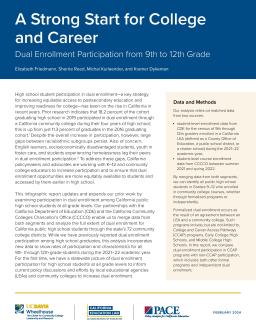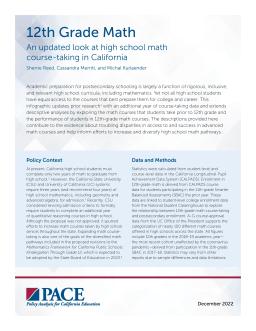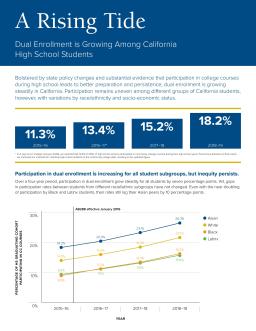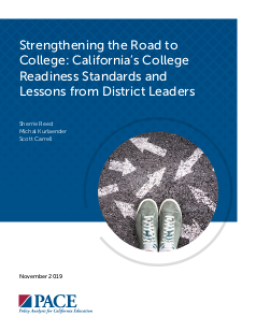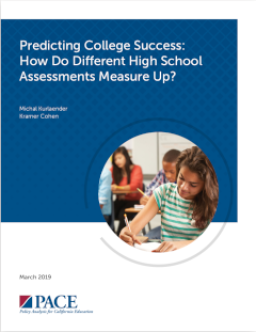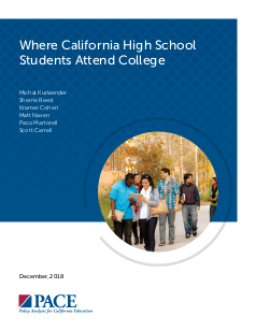Summary
California policymakers and educators are promoting dual enrollment to boost educational attainment and equal access to postsecondary opportunities. Assembly Bill 288, enacted in 2016, encouraged high school-community college collaboration, and funding for dual enrollment has increased. Local educators are working to expand programs and support student success. Participation grew steadily from 2015–16 to 2019–20, but stalled in 2020–21 and 2021–22, likely due to the COVID-19 pandemic's impact on dual enrollment opportunities.
Summary
This infographic, from PACE and Wheelhouse, examines participation in dual enrollment among 9th to 12th graders. The data show that about 10 percent of all California public high school students enrolled in community college courses in 2021–22, but these rates vary from zero to 97 percent depending on locality. Analysis demonstrates that dual enrollment participation is unequally distributed across racial/ethnic and socioeconomic groups as well as geography. The evidence demonstrates the potential of improving early access to dual enrollment in 9th grade for closing these equity gaps.
Summary
Summary
Summary
Summary
Summary
In the run-up to 2020 elections, where do California voters stand on key education policy issues? This report examines findings and trends from the 2020 PACE/USC Rossier poll. Key findings include rising pessimism about California education and elected officials, continued concern about gun violence in schools and college affordability, and negative opinions about higher education. However, there is substantial support for increased spending, especially on teacher salaries.

